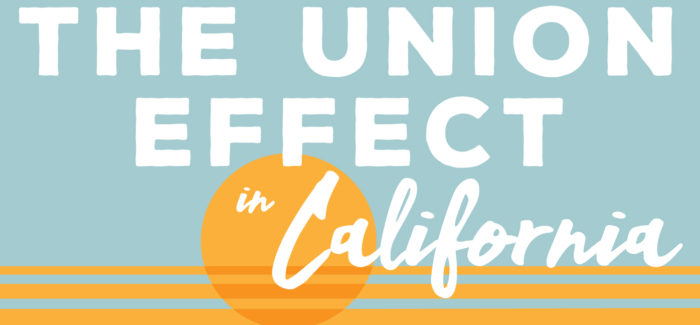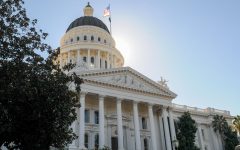
Elementary Students in Class. (Photo: SB Professional/Shutterstock)
The Problem(s) With Public Sector Unions
In wake of the LAUSD strike and continued ignominious slide toward educational mediocrity, it is time to reexamine California’s policies
By Martin Marks, March 27, 2023 3:00 am
The three-day strike by Local 99 of the Service Employees International Union (SEIU), a union representing The Los Angeles Unified School District’s (LAUSD) approximately 30,000 employees comprising bus drivers, custodians, teachers’ aides, and food service workers has come and gone. The strike was supported by United Teachers of Los Angeles (UTLA) which represents nearly 35,000 teachers, librarians, school nurses and counselors.
The walk-out affected the 420,000 students and their families who comprise the second largest school district in the nation.
The strike ended Thursday with no deal having been reached, and negotiations continued in earnest. Los Angeles Mayor Karen Bass stepped in to help facilitate and mediate negotiations, inviting school district and union leaders to L.A. City Hall to further discussions at what the mayor described as “neutral space.”
On Friday it was announced that a tentative agreement had been reached between the school district and the union which now awaits approval of union members. As is typical for any negotiation’s outcome, compromise by both sides was needed, yet predictable spin from the combatants and certainly from the mainstream media was immediately launched in order to claim victory in the aftermath of a rather vitriolic public relations war that had been ongoing since well before the strike was initiated.
SEIU had been pushing for a staggering more than 30% increase in wages, along with an increase in hours and health benefits for part-time workers, and an accelerated hiring program to address perceived staff shortages. On the other side, school district representatives presented a package that would include a 5% wage increase retroactive to July 2021, another 5% increase retroactive to July 2022, and a 5% increase starting this July, in addition to an enhanced bonus plan.
Ultimately, the negotiated agreement yielded a 6% wage increase retroactive to July 1, 2021, a 7% increase retroactive to July 1, 2022, a 7% increase effective July 1, 2023, a $2 per hour increase for all employees effective January 1, 2024, and a new minimum wage of $22.52 an hour for all LAUSD workers. On average, the change in salaries for SEIU employees translates to an increase from $25,000 to $33,000 (the union was seeking $36,000)—a not so insignificant percentage increase, yet the union had to pass on many of the other contract items they were seeking.
Regardless of this contract outcome and which sides can claim victory, serious questions arise regarding the advisability of having public sector unions such as the SEIU, UTLA, et. al. in existence at all and their ability to collectively bargain and launch strikes against essentially the taxpayers of any given public jurisdiction.
In the case of the recent LAUSD strike, 420,000 students and their families were held hostage by public sector unions in a school district already beset by financial and other woes. According to LAUSD superintendent Alberto Carvalho, what the union sought would have put the school district on the brink of insolvency. Also, the strike itself precluded many disadvantaged students from receiving necessary daily meals that their families count on. Most importantly, a school district still reeling from the effects of a Covid-induced school lockdown just could not afford three more days of non-instruction. Arguably, the LAUSD is already a floundering if not failing district with ever-increasing taxpayer spending in spite of withering enrollment and diminishing student performance.
It is to be noted that the demographics of the American union have changed dramatically over the years. While at one time the predominance of union membership was mostly among private sector blue collar workers, the ratios have flip-flopped where now the greatest numbers are not only in the public sector but are also associated with white collar employees. It should be further noted that public sector unions were once illegal in the United States.
Well-founded arguments have been made against public sector unions for quite some time now. Most notably, Franklin D. Roosevelt, historically known as a champion of liberal causes including the establishment of unions and their ability to collectively bargain contracts, warned against the establishment of unions for the public sector. In a 1937 letter to Luther Steward, President of the National Federation of Federal Employees, President Roosevelt wrote:
“All Government employees should realize that the process of collective bargaining, as usually understood, cannot be transplanted into the public service. It has its distinct and insurmountable limitations when applied to public personnel management. The very nature and purposes of Government make it impossible for administrative officials to represent fully or to bind the employer in mutual discussions with Government employee organizations. The employer is the whole people, who speak by means of laws enacted by their representatives in Congress. Accordingly, administrative officials and employees alike are governed and guided, and in many instances restricted, by laws which establish policies, procedures, or rules in personnel matters.”
“Particularly, I want to emphasize my conviction that militant tactics have no place in the functions of any organization of Government employees. Upon employees in the Federal service rests the obligation to serve the whole people, whose interests and welfare require orderliness and continuity in the conduct of Government activities. This obligation is paramount. Since their own services have to do with the functioning of the Government, a strike of public employees manifests nothing less than an intent on their part to prevent or obstruct the operations of Government until their demands are satisfied. Such action, looking toward the paralysis of Government by those who have sworn to support it, is unthinkable and intolerable.”
Pretty strong sentiment from an icon of America’s Left, no?
George Meaney, the first president of the powerful AFL-CIO union behemoth once remarked:
“It is impossible to bargain collectively with the government.”
In 1943, a New York Supreme Court judge opined:
“To tolerate or recognize any combination of civil service employees of the government as a labor organization or union is not only incompatible with the spirit of democracy, but inconsistent with every principle upon which our government is founded. Nothing is more dangerous to public welfare than to admit that hired servants of the State can dictate to the government the hours, the wages and conditions under which they will carry on essential services vital to the welfare, safety, and security of the citizen. To admit as true that government employees have power to halt or check the functions of government unless their demands are satisfied, is to transfer to them all legislative, executive and judicial power. Nothing would be more ridiculous.”
And of course as noted, things have changed quite a bit in the realm of public sector unions and their influence.
With the lessening of almost absolute influence over doling out public sector jobs by the local political machines with the enactment of civil service laws, and instead of those public sector jobs being gained or lost through invariable changes in direction of the winds of politics, public employees were gaining essentially lifetime job security. Accordingly, this bestowed an interest and ultimately a legal permission for these employees to advocate for themselves by unionizing and bargaining collectively.
Perhaps of greater importance was the symbiotic relationship established between the Democratic party and the unions themselves, where Democrats found not only a reliable voting constituency, but also an almost endless supply of campaign funds emanating from required employee union dues. In exchange, a pro-union platform and resultant facilitating laws have been the hallmark of Democrat politics. Ultimately, the public sector unions have influenced laws that not only enhance their financial compensation and benefit packages at taxpayer expense but also have been quite successful in crafting policy that expand the need for their services. Symbiosis indeed.
Perhaps the strongest argument against public sector unions is that for better or worse, the government holds a monopoly on certain services including, but not limited to policing, firefighting, public works, and for the most part teaching our children. Accordingly, there is essentially no other place to turn for these services and this gives these public sector employees incredible and arguably unfair advantages at the collective bargaining table—once again at taxpayer expense.
And of course, the bludgeon that unions hold over their employees is the ability to strike. Most states—37 of them–have made it illegal for public school employees to strike for many of the valid reasons previously mentioned here. Almost predictably, not California. The California Teachers Association (CTA) proudly chronicles many of the recent strikes—including the recently concluded SEIU walkout in Los Angeles–that have transpired in various Golden state school districts.
Lest California—Los Angeles Unified School District in particular—wishes a continued ignominious slide toward educational mediocrity at exorbitant and ever-escalating cost, perhaps it is time to reevaluate policy that puts public school employees in the proverbial catbird seat.
In 1981, President Ronald Reagan, citing the oath that air traffic controllers pledged to not strike “against the government or any agency thereof”, fired more than 11,000 of those workers over the Professional Air Traffic Controllers Organization (PATCO) illegal walkout. Not only did he fire them, but he also banned them from any future employment with the government.
Perhaps it is time—as a condition of public employment—for school district employees to also sign such a pledge and then be dealt with accordingly. As the teachers’ unions, er…..education associations continually remind us, “It’s for our kids, right?” RIGHT??
- Vice President Vance Visits The Golden State - February 22, 2025
- Is DEI Ready To DIE? - January 4, 2025
- Just How Effective Was The Abortion Debate in The 2024 Election? - November 18, 2024





When you control the media, the legislators, and have an army of vote harvesters, you are expecting what again, peon?
Mr. Mark was right on the mark when he pointed out that government holds a monopoly on public services and there is essentially no other place to turn for these services which gives public sector employees unfair advantages at the collective bargaining table at taxpayer expense. It doesn’t help when Marxist Democrats such as LA Mayor Karen Bass are installed into office when public union assistance and then they help the same public unions with their wage and benefits demands.
Pubic sector unions own the California legislature and Governor outright.
The “pandemic” was a wet dream for unionized public employee workers. Most of them (particularly public teachers) had to do almost no work yet they retained their full salaries and benefits.. Children suffered because of teacher incompetence before the pandemic and suffered ten-fold during the pandemic. But these grifters are now claiming grievance and going on strike despite their relentless failures.
We have created a permanent two-class society, more rigid than any other caste system: (1) the vast numbers of government employees and their unions; and (2) the rest of us forced to fund them.
Nothing else existentially divides us as much as this: Big Government vs. the rest of us.
Yet we continue to vote that creates this current state of affairs.
The State is us; not them.